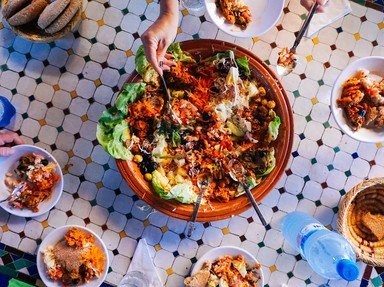Quiz Answer Key and Fun Facts
1. The potato is one of the world's largest food crops and the source of the much beloved French fry, but what toxin lurks within?
2. North American cantaloupes, netted muskmelons or rockmelons are a popular breakfast or dessert food, but to which bacteria are they susceptible?
3. Cassava is an important food crop in tropical countries, but unprocessed cassava plants contain potentially toxic levels of which substance?
4. The puffer fish is a cute little fellow, and fish are healthy to eat, right? Well if this one isn't prepared correctly, it packs a deadly wallop of which poison?
5. Pork is a popular meat in several of the world's cuisines, but what parasitic disease might result from consuming it?
6. Rhubarb is a vegetable whose stalks are a popular pie ingredient, but what toxin will affect you if you ingest its leaves?
7. Mushrooms come in a variety of shapes, colors and sizes, which can make it difficult to distinguish the safe ones from the poisonous ones. What toxins await you if you guess wrong?
8. Beef - "it's what's for dinner", according to the slogan, but you don't want to consume beef from cows infected with bovine spongiform encephalopathy. Which disease can it lead to in humans?
9. Kidney beans are a heavy on nutrition, but what deadly toxin lurks in the raw beans?
10. An apple a day keeps the doctor away, but which substance in apple seeds might send you to the doctor?
Source: Author
PDAZ
This quiz was reviewed by FunTrivia editor
gtho4 before going online.
Any errors found in FunTrivia content are routinely corrected through our feedback system.

